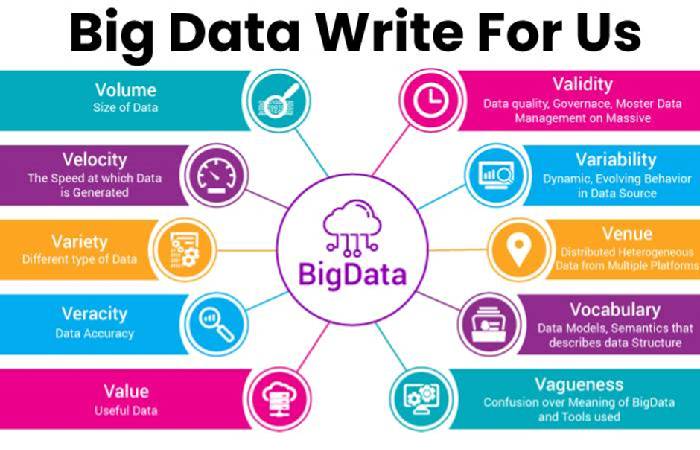Big Data Write For Us
Big data is a term that describes massive data sets that are so large and complex that traditional data processing tools cannot handle them. These data sets can include structured, semi-structured, and unstructured data, from social media posts and sensor readings to financial transactions and blogs. you can email us at contact@techiesline.com
Introducing The Big Data.
Big data is a term used to describe large and complex datasets that are difficult to process using traditional methods. This data can be structured, semi-structured, or unstructured, and it can come from a variety of sources, such as social media, sensors, and machines.
Big Data Optimally Used By The Three Vs:
Volume: The sheer amount of data that is being generated is enormous. For example, Facebook collects 2.5 quintillion bytes of data every day!
Speed: The data is constantly being created and updated. For example, Twitter users send out over 500 million tweets every day!
Variety: The data comes in many different formats, such as text, images, and videos. For example, YouTube users upload over 5 billion videos every day!
Because of these features, big data can be exciting to store, process, and analyze. However, it also has the likely to be very valuable. By analyzing big data, companies can gain insights into their customers, improve their products, and make better decisions.
Big Data Technologies
- Data storage and management.
- Hadoop
Hadoop is an open-source framework that enables distributed storage and processing of large data sets across groups of computers. It is highly scalable, fault-tolerant, and can handle many data types.
NoSQL Databases
NoSQL databases remain designed to handle unstructured and semi-structured data, making them well-suited for storing big data. Examples include MongoDB, Cassandra, and Couchbase. However, these databases provide flexibility, scalability, and high performance when dealing with large data sets.
Data Processing And Analysis.
Apache Spark: Apache Spark is an open-source distributed computing platform for fast and flexible data processing. It is often used with Hadoop to accelerate data processing tasks and can handle various workloads, including machine learning and graphics processing.
Machine learning algorithms: Artificial intelligence and artificial intelligence (AI) are essential in extensive data analysis. They can automatically recognize patterns and trends in massive data sets, make predictions, and even generate insights that humans might miss.
How To Submit Your Articles?
For Submitting Your Articles, you can email us at contact@techiesline.com, or send the demo article to the provided email address.
Why to Write for Us Techies Line Big Data Write For Us

- Writing for Techiesline can give massive exposure to your website for customers looking for tech.
- Techiesline presence is on Social media and will share your article for the tech, marketing, related audience.
- You can reach out to tech enthusiasts.
Search Related Terms to Big Data Write For Us
Big Data (band)
data-processing application software
statistical power
false discovery rate
capturing data
data storage
data analysis
sharing
transfer
visualization
predictive analytics
user behavior analytics
governments
Internet searches
Fintech
radio-frequency identification
McKinsey & Company
Relational database management systems
Search Terms for Big Data Write For Us
Big Data Write For Us
looking for guest posts
guest posting guidelines
become a guest blogger
guest post
becomes an author
suggest a post
contributor guidelines
guest posts wanted
submit an article
writers wanted
guest posts wanted
submit the post
contributor guidelines
contributing writer
[big data meaning]
[big data technology]
[big data examples]
[big data tutorial]
[big data tools]
[big data pdf]
[big data analytics]
[big data course]
contributing writer
Guidelines for Article to Writing Big Data Write For Us
- Make sure you write a compelling post title – However, if needed, we might change the post title for SEO purposes.
- Ensure your post is between at least 500 – max 1100 words;
- Write about any of the related topics/categories mentioned below;
- Your guest post must be neutral. This means that it may not include any advertising or promotional links;
- We don’t accept articles that have already been posted on other platforms (duplicate content);
- Please check your spelling and content structure. If your content requires a lot of editing, it will be rejected.
For Submitting Your Articles, you can email us at contact@techiesline.com

